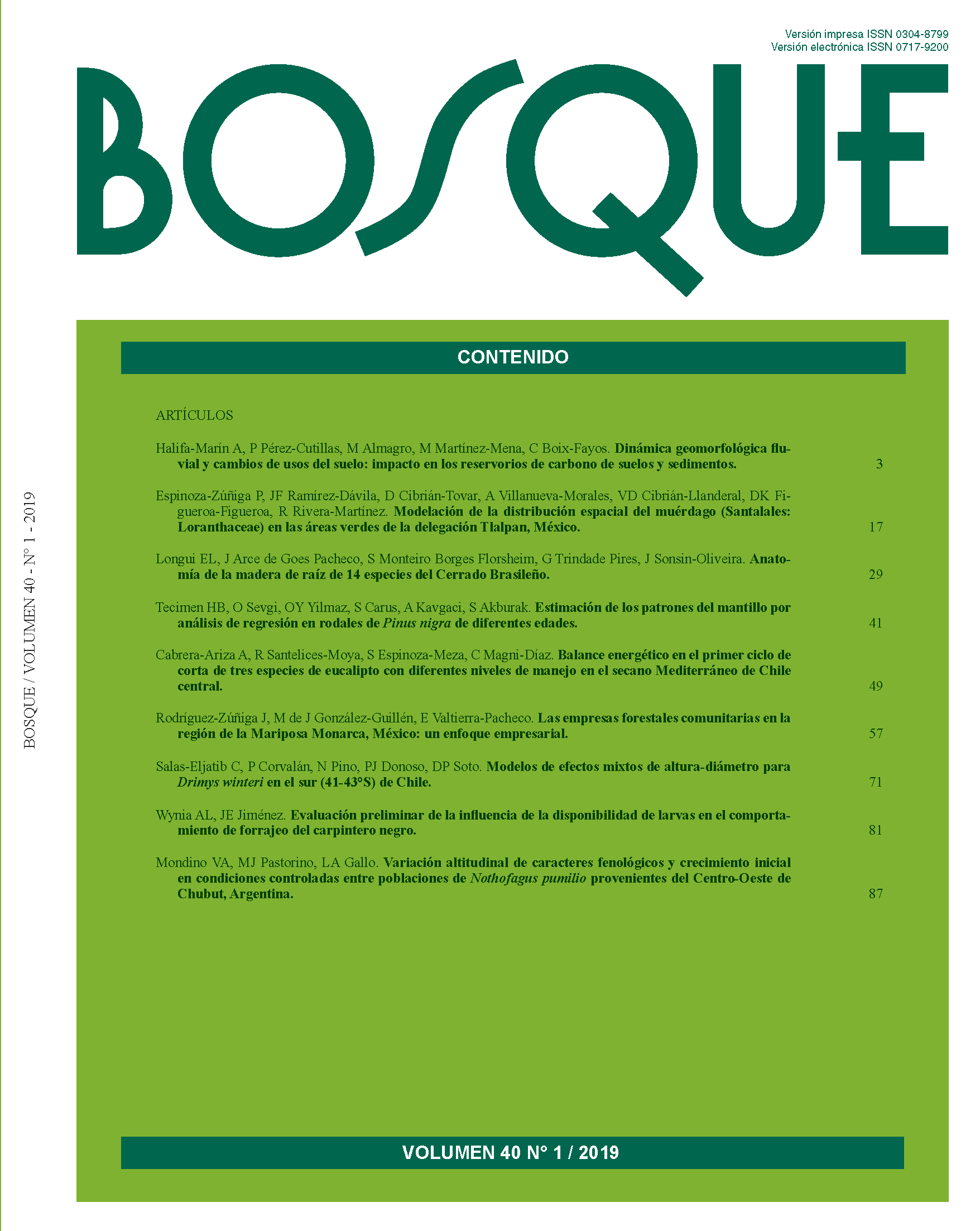Evaluación preliminar de la influencia de la disponibilidad de larvas en el comportamiento de forrajeo del carpintero negro
Contenido principal del artículo
Resumen
El carpintero sudamericano más grande, el carpintero negro (Campephilus magellanicus), así como también su hábitat, los bosques primarios de Nothofagus spp., están disminuyendo a lo largo de su rango. En este estudio fueron mapeadas galerías de larvas de coleópteros en dos lengas (N. pumilio) en la isla Navarino, Chile, para comprender mejor la disponibilidad de presas e inferir qué factores podrían afectar el comportamiento de forrajeo del carpintero. Además, se compararon las ubicaciones de las larvas con los orificios de forrajeo para inferir la accesibilidad a las presas. Se extrajo un total de 35 larvas de las familias Cerambycidae y Lucanidae y fue identificado un Cerambycidae (Microplophorus magellanicus) y un Lucanidae (Erichius femoralis). Las profundidades máximas de excavación del carpintero fueron de 71-90 mm; mientras que la mayoría de las profundidades de las galerías de las larvas fueron de 51-70 mm. Se necesita investigación adicional para examinar las características de los árboles asociadas con larvas accesibles. Esto permitirá tomar decisiones informadas para el manejo y conservación de esta especie de carpintero.

